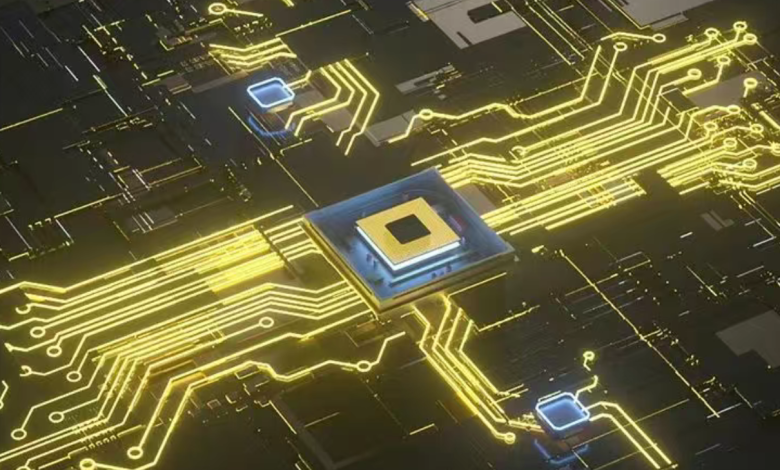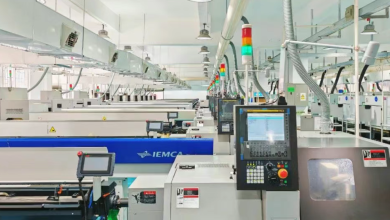
Why Shenzhen’s Semiconductor and Integrated Circuit Industry Is Worth Investing In
In the global race for semiconductor innovation and investment, Shenzhen has emerged not just as a participant, but as a powerhouse. Known for its rapid transformation from manufacturing hub to innovation capital, this southern Chinese city is now leading the charge in the semiconductor and integrated circuit (IC) industry. Backed by robust government support, an expansive industrial ecosystem, and surging capital flows, Shenzhen is becoming an essential node on the world’s semiconductor map.
A City Where Policy Powers Progress
Shenzhen’s success story isn’t accidental—it’s policy-driven. Over the past five years, local and municipal governments have rolled out a series of comprehensive policies aimed at nurturing high-value industries. In March 2024, the city released the Implementation Plan for Accelerating the Development of New Productive Forces, specifically targeting strategic sectors like semiconductors and ICs.
This blueprint marks a shift from mere “policy dividends” to substantial “industrial dividends,” where the government doesn’t just fund, but actively shapes and sustains an innovation-centric ecosystem. Through tax breaks, grants, and talent subsidies, Shenzhen has become a magnet for high-tech capital.
District-Level Strategies: Targeted and Tactical
Shenzhen’s commitment isn’t limited to city-wide policies. Districts like Nanshan, Bao’an, Longhua, Longgang, and Futian have each issued localized policies tailored to their industrial strengths.
For instance, Nanshan focuses on chip design and AI semiconductors, while Bao’an prioritizes chip manufacturing and equipment. These districts offer targeted incentives, such as housing subsidies for tech talent, R&D funding for startups, and fast-track support for IP protection and international certifications.
Mapping Shenzhen’s Semiconductor Supply Chain
The city’s industrial ecosystem is no longer fragmented. Instead, Shenzhen now boasts a full-stack semiconductor and IC industry chain, divided into three core layers:
- Upstream: Includes EDA software firms like Hongxin Micro, IP providers such as Zhongxin Semiconductor, and material companies like Taigao Tech.
- Midstream: Encompasses chip design (Huaxin, Tiandejue), manufacturing (Longtu Photomask), and packaging (Honggang Optoelectronics).
- Downstream: Supports applications in telecom (Huawei, ZTE), smart finance (Lenovo, Datang), and automotive electronics (BYD, Yinwang Intelligent).
This synergy ensures that innovation flows seamlessly from design to end-use, enabling companies to iterate quickly and efficiently.
By the Numbers: Scale and Growth
In 2023, Shenzhen’s semiconductor and IC sector achieved a total output of 213.68 billion RMB, up 32.8% year-over-year. For the first half of 2024, output reached 119.5 billion RMB, showing no signs of slowing down. According to the Shenzhen Electronics Association, local IC production hit 55.764 billion units in 2023, reflecting a CAGR of 22.3% from 2020.
Key districts like Nanshan, Longhua, Longgang, and Futian are leading this growth:
- Nanshan: Excels in AI and edge computing chips.
- Longhua: Hosts major players like Zhongke Feice and JinYu Semiconductor.
- Bao’an: Reached 92 billion RMB in output in 2023 alone.
- Pingshan: Still catching up, with 10.1 billion RMB in output.
Enterprise Ecosystem: Depth and Diversity
Shenzhen’s semiconductor boom is fueled by its dense network of enterprises. As of April 2025:
The city is home to 50 listed companies in the semiconductor/IC space.
14 unicorns and over 200 specialized “little giant” enterprises have emerged.
In 2023 alone, Shenzhen saw 421 newly registered semiconductor companies.
Companies are strategically clustered:
- Nanshan: Hosts leaders like Guowei ChipTech, Huaxin, and Tiandejue.
- Bao’an: Strong in chip manufacturing and equipment, with key players such as China Chip Depot (Yuanxinda) driving global distribution and cross-border e-commerce for semiconductor components.
Industrial parks like Shenzhen Bay Tech Park and Nanshan Smart Park serve as critical hubs for collaboration, talent pooling, and startup acceleration.
Capital Flows: The Investment Surge
Between 2024 and 2025, Shenzhen’s semiconductor sector has seen unprecedented investment activity. Most funding rounds are concentrated in early stages (seed to Series A), indicating strong startup momentum.
Nanshan District again stands out as the investment hotspot, with frequent and high-value funding rounds. Longhua, Bao’an, and Futian also show robust investor interest, reflecting the broader “multi-core” growth pattern across the city.
Forward-Looking Opportunities: Where to Invest Now
Each district has charted its own development roadmap, providing multiple entry points for investors:
- Bao’an District: Aims to become a global hub for automotive-grade, AI, and wearable chip innovation. Target: 120 billion RMB output by 2025.
- Nanshan and Futian: Focusing on high-end chip design, reinforcing Shenzhen’s lead in IC R&D.
- Pingshan: Positioned as a silicon-based semiconductor cluster, targeting 50 billion RMB in output by 2025.
Whether you’re a venture capitalist, a foreign tech firm, or a domestic manufacturer, Shenzhen offers an unmatched combination of infrastructure, policy support, talent, and demand.
Conclusion: Why Shenzhen, Why Now
Shenzhen’s semiconductor and IC industry is not just rising—it’s accelerating. With world-class R&D, a full-spectrum supply chain, and an ecosystem that rewards innovation, the city is poised to lead China’s next big leap in high-tech manufacturing.
For investors, the timing couldn’t be better. The foundation is laid, the policies are aligned, and the players are in place. All that’s left is to plug in—and power up.
Shenzhen isn’t just a place to invest. It’s where the future of semiconductors is being built.





